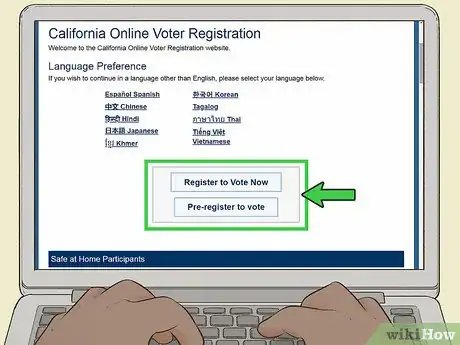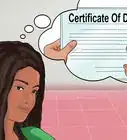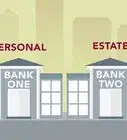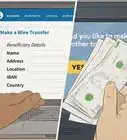This article was written by Jennifer Mueller, JD. Jennifer Mueller is an in-house legal expert at wikiHow. Jennifer reviews, fact-checks, and evaluates wikiHow's legal content to ensure thoroughness and accuracy. She received her JD from Indiana University Maurer School of Law in 2006.
There are 9 references cited in this article, which can be found at the bottom of the page.
This article has been viewed 341,400 times.
Whether you're opening a bank account, trying to get a new driver's license or other ID, or just seeking access to government benefits or services, chances are you'll need to provide proof of your address. The bank or government agency likely has a long list of documents you can use, but what if you don't have any of those handy? Read on to find out what you can do to get proof of address, even if you've recently moved or aren't living someplace permanent.
Things You Should Know
- Use a pre-printed statement or bill addressed to you to most easily prove your address.
- Fill out a change-of-address card at the post office and use the confirmation as proof of address.
- Get proof of address from your parents if you're a minor.
- Ask for a letter or affidavit if you're staying in a shelter or other facility.
Steps
Standard Documents
-
1Use your most recent paycheck stub or tax form. Your employer isn't going to ask you for proof of address, so go ahead and give them your new address. Next time you get paid, your new address will appear on your check stub. Then, you can just use that wherever you need proof of address.[1]
- You can also use tax forms, so when you update your address with your employer, you might ask for an updated copy of your W-2. If it has your new address on it, you're good to go.
-
2Wait for an official piece of mail with your name and address on it. If you have an existing bank account or mobile phone, go ahead and change your address with them—you typically don't have to provide any additional proof of your new address. From there, all you have to do is wait to get a piece of mail from them.[2]
- If you don't want to wait, you could also order a statement online or through their customer service number. Then, you know you'll get something within a few days.
Advertisement -
3Print a recent billing statement from an online account. If you've gone paperless, access your online account and navigate to your full statements. This will typically be a PDF of the statement they would've mailed to you if you still got paper statements. Print that up and you can use it as your proof of address.[3]
- Make sure the statement is dated after you changed your address with the bank or other company that issued the statement. Otherwise, it'll just have your old address on it.
-
4Register to vote at your new address. In the US and many other countries, you're required to update your voter registration any time you move. You'll get a new voter registration card in the mail and you can use that as proof of address.[4]
- If you register to vote in person, your voter registration card might not have your physical address on it. Register online so you'll get the card mailed to you.
-
5Request a statement from Social Security or another government agency. You can call or go online and request a statement from any government agency where you have an account. When that statement arrives at your new address, you'll have the proof of address that you need.[5]
- To get your Social Security statement, go to https://www.ssa.gov/myaccount/statement.html and click on "Sign in" or "Create your account" to get started.
Alternative Documents
-
1Fill out a change-of-address card with the postal service. In the US and other countries, you can register a change of address with the postal service so mail is forwarded from your old address to your new one for a limited period of time. After you submit the change-of-address card, the postal service will mail you a confirmation of the change—and you can use that as proof of address.[6]
- This is often the quickest way to get a piece of official mail with your new address on it, since you'll usually change your address with the postal service before you move.
-
2Use current and valid immigration documents. Immigration documents are typically used to prove your legal status in the country, but they can also be used to prove your address if they include the full address of the place where you currently live. You'll usually need at least one other document to go with them for proof of address, but at least you're halfway there![7]
- Immigration typically isn't going to require proof of address, so changing your address with them is also a way to get a piece of mail in your name at your new address.
-
3Ask your parents to provide proof of address if you're a minor. If you live with your parents, they can prove their address to prove yours. They'll just need to go with you so they can verify their ID as well—they can't just give you documents with their name on them.[8]
- You'll still need documents to prove your identity, such as a passport or birth certificate.
- If you use a birth certificate, this also proves your relationship to your parents.
-
4Provide a letter from the facility where you're staying. If you've moved to a halfway house, rehabilitation center, shelter, or other facility, a letter on facility letterhead is typically sufficient to prove your residency. Staff in the facility office will likely be familiar with what needs to be included in this letter, just let them know you need one.[9]
- The letter must clearly state that the facility will accept mail on your behalf.
-
5Ask your employer or employment agency for a letter. If you've recently moved to accept a new job or work assignment, your employer or employment agency can write a letter on your behalf. Generally, this letter will need to be on company letterhead and signed by someone with authority, such as a manager.[10]
- Military orders could also be sufficient if they include your address or the base where you're stationed.
Affidavit of Residency
-
1Download and print a residency affidavit form. Government agencies typically have affidavit forms you can use if you have no other method of proving your address. Often, you can find these online—just search for "residency affidavit" along with the name of the government agency.[11]
- You can also call or visit the office and ask if they have a form. If they do, they'll give you a copy.
-
2Ask someone to vouch for your residency. While you'll likely fill out the bulk of a residency affidavit yourself, you typically need someone else to complete a section who's willing to vouch for the fact that you live there. This could be a landlord, family member, or roommate.[12]
- Tell the person who agrees to vouch for you not to sign the affidavit yet! They'll need to wait until they're in the presence of a notary who can verify their identity.
-
3Get the affidavit signed in the presence of a notary. You can find notaries and most bank branches, court buildings, and postal or government offices, as well as some law offices and check-cashing places. Search online to find the one closest to you. The notary will verify your identity and the identity of the other person signing the affidavit, then you'll sign. Then, the notary will affix their seal to your document. Your affidavit is now a legal document that can be used as proof of your address.[13]
- A notary only verifies the identity of the people signing a document—they don't review the information in your document at all.
- A notary is very different from a "notario publico," a high-ranking legal official in Latin American countries.[14] In fact, the law in many US states forbids the literal translation of "notary public" because of the profound difference between the two titles.[15]
- Notaries charge a small fee for their services, usually less than $10. The maximum amount they can charge is set by law.
-
4Submit the affidavit as proof of your address. Take your signed and notarized affidavit with you to the financial institution or government agency that required proof of address. While they'll still need to verify your identity, you should have everything you need to prove where you live.[16]
Warnings
- While they might be acceptable forms of identification to prove who you are, you typically can't use documents such as passports, insurance cards, or birth certificates as proof of address or residency because they don't display your current address.[17]⧼thumbs_response⧽
References
- ↑ https://www.in.gov/bmv/files/BMV_Documentation_List.pdf
- ↑ https://www.in.gov/bmv/files/BMV_Documentation_List.pdf
- ↑ https://www.in.gov/bmv/files/BMV_Documentation_List.pdf
- ↑ https://thelibrary.org/about/identification.cfm
- ↑ https://www.in.gov/bmv/files/BMV_Documentation_List.pdf
- ↑ https://www.in.gov/bmv/files/BMV_Documentation_List.pdf
- ↑ https://www.tn.gov/safety/driver-services/classd/dlproof.html
- ↑ https://dmv.colorado.gov/proof-address
- ↑ https://dmv.colorado.gov/proof-address
- ↑ https://www.tn.gov/safety/driver-services/classd/dlproof.html
- ↑ https://publicsafety.ohio.gov/static/bmv2336.pdf
- ↑ https://www.dps.texas.gov/internetforms/forms/dl-5.pdf
- ↑ https://www.dps.texas.gov/internetforms/forms/dl-5.pdf
- ↑ https://coloradosupremecourt.com/PDF/UPL/Notary%20or%20notario%20whats%20the%20difference_English.pdf
- ↑ https://www.sos.state.tx.us/statdoc/notariopublicoarticle.shtml
- ↑ https://publicsafety.ohio.gov/static/bmv2336.pdf
- ↑ https://moneyfacts.co.uk/banking/guides/can-you-open-an-account-without-proof-of-address/



























































